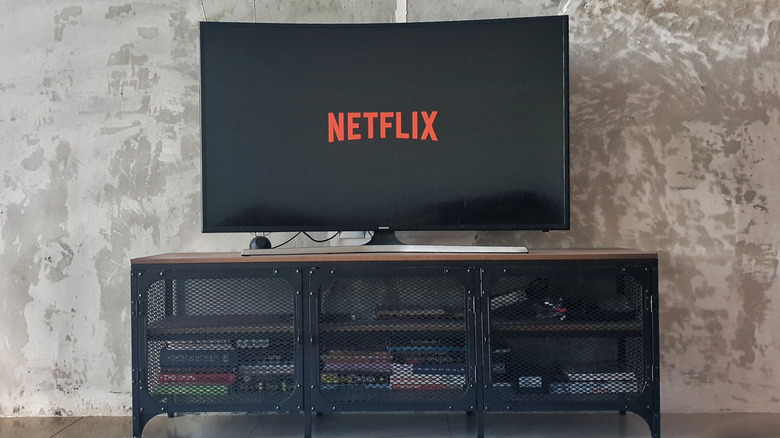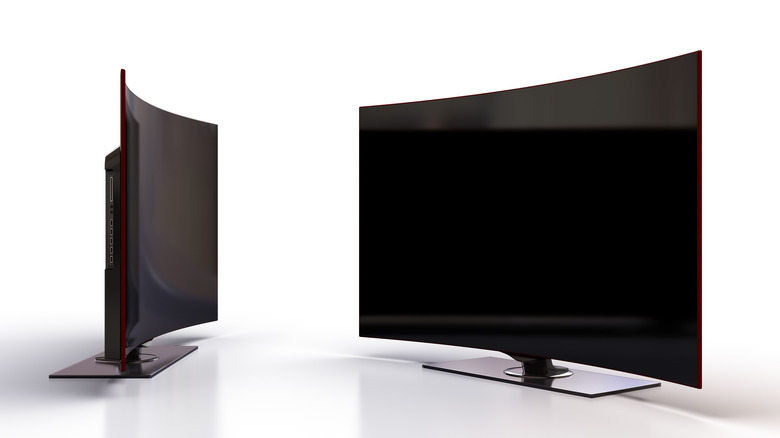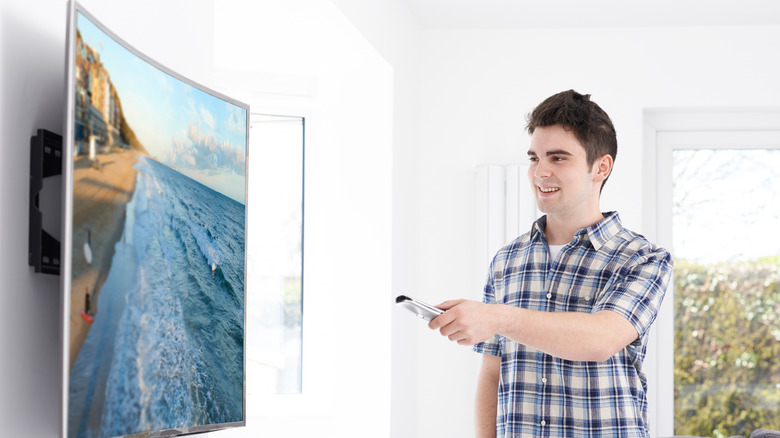What You Need To Know Before Purchasing A Curved TV
In the early to mid-2010s, entertainment engineers were on the hunt for the new hotness. 3D TVs were a bust, and the cultural zeitgeist was turning more toward overall picture quality than weird gimmicks. So, the million-dollar question was this: what can you do to a TV to make the picture quality better, beyond improving the internal function of the screen? The answer they landed on was to curve the screen. Thus, the curved TV was born. Did it work? Eh ... not really.
After an initial novelty period around 2013, the interest in curved TVs petered out pretty quickly, due in no small part to the exorbitant price of many curved sets. After falling out of focus for a few years, though, the remaining curved TVs on the market have dropped substantially in price, to the point that you can get one for around the same price as a modern 4K TV, maybe even less. Before you jump on the first curved TV you see, though, we should quickly cover what the actual intent of the curved view was, and whether or not it works.
The appeal of curved TVs
The original goal of the curved TV concept was to provide a more immersive TV viewing experience. By combining high-definition resolution with a curved viewpoint, kind of like looking at the world through your actual eyes instead of a square window, you were supposed to feel like you were really there.
Indeed, if you're sitting in a curved TV's visual sweet spot, the picture quality is excellent. The curve helps to focus the light coming from the TV more directly into your eyes, which means you perceive more of the picture with a better contrast. You also get more depth in your viewing experience, again thanks to the curve, though many curved TVs will also have some depth-enhancing post-processing in effect to enhance it even further.
As an added bonus, the redirected light from the curve helps to keep the image sharp no matter how far away you're standing from the screen. Even if you have a large living room and can't sit right in front of the TV, you should still get a quality picture, as long as you're sitting in the sweet spot and looking straight at the screen.
Why a curved TV might not be right for you
If curved TVs have such a great picture, why did they peter out? The price was definitely a big factor, but in addition to that, the curved shape presented a handful of problems for the casual TV viewer. As mentioned, the picture looks the best when you're sitting in the sweet spot. If you're not in the sweet spot, the picture doesn't look much better than a regular TV, and depending on the lighting in your room, it could even look worse. If you have a lamp right behind you, for example, the light can reflect into the curve with nowhere else to go, creating an annoying reflection.
Perhaps the most widespread problem was that, past a certain viewing angle, you basically couldn't see one side of the screen at all. The reason you get a big TV for a big living room is so multiple viewers can see the screen clearly from any part of the room. If the picture isn't clear from the far side, and only one person in the sweet spot gets the best view, that's just going to annoy your family. If you have a private viewing room that you don't move around in a lot, then a curved TV could be nice. In just about any other case, though, you'd probably be better off just getting a regular flat screen.


